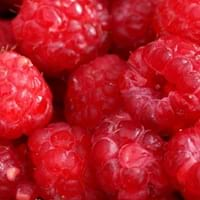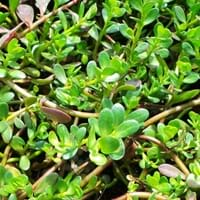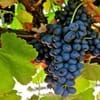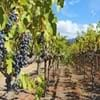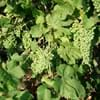Life Span
Perennial
Perennial
Origin
Not Available
Africa, Asia, Australia, Europe, North America, South America, Southern India
Types
PRIMOCANE RED RASPBERRIES ,FLORICANE RED RASPBERRIES
Herpestis monniera
Habitat
Forests, Mountains, Tree canopies
Wet lands
USDA Hardiness Zone
4-8
Not Available
AHS Heat Zone
8-1
Not Available
Sunset Zone
A1, A2, A3, 1a, 1b, 2a, 2b, 3a, 3b, 4, 5, 6, 7, 8, 9, 10, 11, 12, 13, 14, 15, 16, 17, 18, 19, 20, 21, 22, 23, 24
Not Available
Habit
Upright/Erect
Not Available
Flower Color
White
Yellow
Flower Color Modifier
Bicolor
Bicolor
Fruit Color
Red
Not Available
Leaf Color in Spring
Green
Dark Green
Leaf Color in Summer
Green
Dark Green
Leaf Color in Fall
Green
Dark Green
Leaf Color in Winter
Light Green
Dark Green
Plant Season
Spring, Summer, Fall
Spring, Summer, Fall, Winter
Sunlight
Full Sun, Partial Sun
Full Sun, Partial Sun, Partial shade
Type of Soil
Loam, Sand
Loam, Sand
The pH of Soil
Acidic, Neutral
Acidic, Neutral, Alkaline
Soil Drainage
Well drained
Well drained
Bloom Time
Spring, Summer
Indeterminate
Tolerances
Drought
Drought
Where to Plant?
Container, Ground, Pot
Container, Ground, Pot
How to Plant?
Suckers
Leaf Cutting, Root Division, Seedlings
Plant Maintenance
Medium
Medium
Watering Requirements
Average Water Needs
Requires regular watering
In Summer
Lots of watering
Lots of watering
In Spring
Moderate
Moderate
In Winter
Average Water
Average Water
Soil pH
Acidic, Neutral
Acidic, Neutral, Alkaline
Soil Type
Loam, Sand
Loam, Sand
Soil Drainage Capacity
Well drained
Well drained
Sun Exposure
Full Sun, Partial Sun
Full Sun, Partial Sun, Partial shade
Pruning
Remove damaged leaves, Remove dead branches, Remove dead leaves
Remove damaged leaves, Requires very little pruning
Fertilizers
All-Purpose Liquid Fertilizer
fertilize in growing season, organic fertlizers
Pests and Diseases
Red blotch
Grasshoppers
Plant Tolerance
Drought
Drought
Flowers
Insignificant
Showy
Flower Petal Number
Single
Single
Foliage Texture
Medium
Fine
Foliage Sheen
Matte
Matte
Attracts
Birds, Butterflies
Hummingbirds
Allergy
Abdominal pain, breathing problems, Diarrhea, Eczema, Fainting, Itchiness, Nausea, Vomiting, wheezing
Dry Mouth, gastro-intestinal problems, Nausea, Pain and fatigue, Stomach pain
Aesthetic Uses
bank hedging, Cottage Garden, Slopes hedging
Not Available
Beauty Benefits
Not Available
Good for skin, Speed hair growth, Stops hair loss
Environmental Uses
Air purification
Air purification
Medicinal Uses
anti-inflammatory, Anti-oxidant, Cancer, Improve heart health, Liver Protection, Skin Whitening and Pigmentation Medicine, Weight loss
Bronchitis, constipation, Cough, Digestive disorders, Fever, Fights Depression, Improving mental health, Skin Disorders
Part of Plant Used
Fruits, Leaves, Root
Whole plant
Other Uses
Jam, Jelly, Used As Food, Used for its medicinal properties
Culinary use, For making oil for cosmetics
Used As Indoor Plant
No
No
Used As Outdoor Plant
Yes
Yes
Garden Design
Edible, Fruit / Fruit Tree, Hedges
Feature Plant, Hedges, Screening / Wind Break, Shade Trees, Street Trees, Tropical
Botanical Name
RUBUS 'Autumn Bliss'
Bacopa monnieri
Common Name
Red Raspberry
brahmi, thyme-leafed gratiola, water hyssop, herb of grace, Indian pennywort
In Hindi
रूबस idaeus
ब्राह्मी
In German
Himbeere
Kleine Fettblatt
In French
Rubus idaeus
Bacopa monnieri
In Spanish
Rubus idaeus
bacopa, hisopo de agua, brahmi and lágrima de bebé
In Portuguese
Rubus idaeus
Brahmi
In Polish
Rubusidaeus
brahmi
In Latin
Rubus idaeus
Brahmi
Phylum
Magnoliophyta
Magnoliophyta
Class
Magnoliopsida
Magnoliopsida
Order
Rosales
Scrophulariales
Family
Rosaceae
Scrophulariaceae
Clade
Angiosperms, Eudicots, Rosids
Angiosperms, Asterids, Eudicots
Tribe
Rubeae
Not Available
Subfamily
Rosoideae
Not Available
Number of Species
Not Available
Not Available
Importance of Red Raspberry and Brahmi
Want to have the most appropriate plant for your garden? You might want to know the importance of Red Raspberry and Brahmi. Basically, these two plants vary in many aspects. Compare Red Raspberry and Brahmi as they differ in many characteristics such as their life, care, benefits, facts, etc. Every gardener must at least have the slightest clue about the plants he wants to plant in his garden. Compare their benefits, which differ in many ways like facts and uses. The medicinal use of Red Raspberry is anti-inflammatory, Anti-oxidant, Cancer, Improve heart health, Liver Protection, Skin Whitening and Pigmentation Medicine and Weight loss whereas of Brahmi is Bronchitis, constipation, Cough, Digestive disorders, Fever, Fights Depression, Improving mental health and Skin Disorders. Red Raspberry has beauty benefits as follows: Not Available while Brahmi has beauty benefits as follows: Not Available.
Compare Facts of Red Raspberry vs Brahmi
How to choose the best garden plant for your garden depending upon its facts? Here garden plant comparison will help you to solve this query. Compare the facts of Red Raspberry vs Brahmi and know which one to choose. As garden plants have benefits and other uses, allergy is also a major drawback of plants for some people. Allergic reactions of Red Raspberry are Abdominal pain, breathing problems, Diarrhea, Eczema, Fainting, Itchiness, Nausea, Vomiting and wheezing whereas of Brahmi have Dry Mouth, gastro-intestinal problems, Nausea, Pain and fatigue and Stomach pain respectively. Having a fruit bearing plant in your garden can be a plus point of your garden. Red Raspberry has showy fruits and Brahmi has no showy fruits. Also Red Raspberry is not flowering and Brahmi is not flowering . You can compare Red Raspberry and Brahmi facts and facts of other plants too.
